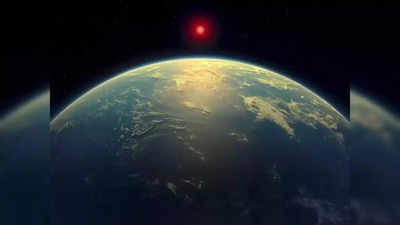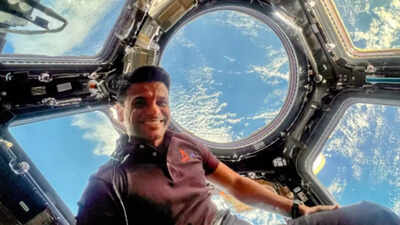K2-18b planet discovery: Scientists warn contacting alien life 120 light-years away could endanger Earth – ‘It would be a really bad idea…’ |

Found 120 light-years away from Earth in the constellation of Leo, the K2-18b planet is causing ripples among scientists. Twice the size of the Earth, the planet orbits the habitable zone of its star where temperatures may be conducive to the presence of liquid water. Scientists recently discovered chemicals in its atmosphere in the form of water vapor, carbon dioxide, and methane. These findings have brought forth the thrilling potential of life beyond our planet. But the recent find of two other compounds, namely dimethyl sulfide and dimethyl disulfide, has actually stimulated the imagination of scientists to a great extent. Such natural compounds are discovered to be produced only by aquatic life on our planet, and this has led scientists to believe that K2-18b may have life forms in its hydrogen-dominated atmosphere and potential oceans.
K2-18b discovery fuels alien life hopes, but scientists warn contact remains risky
Chemical makeup of K2-18b is a huge leap towards the presence of extraterrestrial life. The detection of dimethyl sulfide, a volatile organic compound which is a sign of biological activity on our planet, has fueled rumors that microbial life could be thriving on the distant world. This discovery put K2-18b right at the center of astrobiology, and it is now considered one of the strongest candidates for extraterrestrial life. Though this is not definitive proof, it could be the solution to the centuries-old question that has been asked: Are we alone in the universe?
With the potential for extraterrestrial life increasingly within our grasp, the next question that springs to mind is: do we attempt to make contact? While some are thrilled at the prospect of communicating with alien life, other experts advise with caution. One of the most outspoken advocates of caution is British physicist and science writer Mark Buchanan. Buchanan is cautioning against the threat that establishing contact with other alien civilizations may pose to the human race. Observing the trend of human history, he contends that contact between civilizations has generally led to the dominance or destruction of the weaker civilizations. Buchanan’s ominous warning is that the desire to utter “hello” will inadvertently usher in disaster.
Scientists advise caution on sending signals to K2-18b
Sending messages to star systems light-years distant is science fiction now. Scientists can now send signals—light and radio waves—over vast distances. According to the ET reports, Buchanan does not believe there is wisdom in sending them. In his opinion, even if there is life on K2-18b, it might not be friendly, and even if it were, it would not be the type of life we ever knew. The best thing, according to Buchanan, is to observe the planet from afar without establishing direct contact. This cautionary measure is seconded by ethicist Dr. Anthony Milligan, who also addresses the risks of contact, even with the best of intentions. Dr. Milligan warns that we should take most seriously the security of Earth as well as the probable effect of our actions on other life.
Even though technological send-offs to planets are a possibility, sending messages back and forth between ourselves and an extraterrestrial civilization is still incredibly daunting. If you were to send a message off into space towards K2-18b today, Avi Loeb at Harvard University and a theoretical physicist states, we could at best hope to receive a reply some 2273—over two centuries from today—when it comes. Loeb is also uncertain whether or not the aliens would even respond, especially if they view man as not being intelligent or as a threat. The distances to star systems and the issue of whether any extraterrestrial life that may be present as civilizations could receive or decipher our signals put communication beyond reach as never before.
K2-18b discovery promises life but needs more study
Though scientists are ecstatic over the detection of dimethyl sulfide and other chemicals on K2-18b, they are cautious not to rush to conclusions. The evidence is promising but not yet conclusive. To reach a conclusion with tremendous scientific certainty, scientists would need to make more precise observations, including additional information from NASA’s $10 billion James Webb Space Telescope. While the research into K2-18b is ongoing, Cambridge University astrophysicist Dr. Nikku Madhusudhan, who is heading the research, points out that the planet’s hydrogen-rich atmosphere and possible liquid water open up a completely new world where life can exist.
The discovery of possible life on K2-18b is a record-breaking milestone for human exploration of the universe, it is equally a caution regarding the hazards yet to come. As we set scientific limits beyond and reach out to the stars, there are voices like that of Mark Buchanan cautioning prudence. The cosmos is full of wonders beyond our imagination, yet it might be full of dangers beyond our dreams.
Also Read |Is the universe rotating? This groundbreaking new theory could help resolve the Hubble tension






